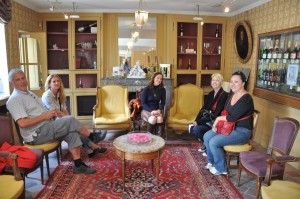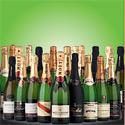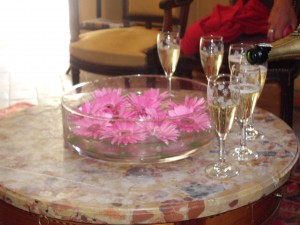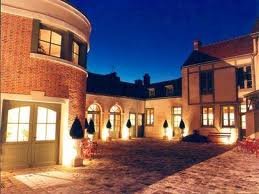After Ken and I finally stumbled upon the “G.H. Martel Champagne” sign, we entered a charming office that looked like someone’s living room to wait for the tour. In Reims we had eaten lunch at a brasserie and noticed two young women sitting next to us eating what appeared to be a delicious lunch.  They walked into the room a few minutes later to join the tour. Fancy meeting you here we joked.  They were from Sydney and one of them is in Paris studying and her friend from Sydney is visiting her. A couple from Sweden joined the group and our tour guide, Sophie, lead us to the entry way to the cave.
We saw the antique equipment that has been used in the process when it was all done by human labor before it became modernized at their operation in Epernay, another Champagne center. Women were not allowed to be involved in the process except for one job: attaching the labels.
The champagne process takes so much work and it amazes me that someone figured it out. First they make the wine, then add the sugar and yeast, then turn the bottles, then disgorge the sediment, then add a little more wine, then put a cork on it. Voila! Who figured out that you could get rid of the yeast sediment by freezing it in the neck and then opening the bottle?
During WWII 120 hid in G.H. Martel’s Champagne Cave. People have also come here alone to have a toast before their wedding for good luck. Our guide Sophie told us that “champagne cellars are a cathedral underground.†This cellar, although dark and damp, did possess the calm that one finds sitting in a church.
This year is an exciting year in Champagne making because it may produce a “vintage year.†The last vintage year was 2004—this is when the conditions are so perfect that 100 percent of a grape is used in the champagne—there’s no mixing of different grapes. Because April and May were unseasonable warm this year, followed by a very cool, rainy June, champagne makers are hoping that this will be a very good year for the grapes.
The tour ended back in the living room where we sampled three generous glasses of champagne: Coeur de Cuvee made from chardonnay, pinot noir, and pinot menier; Grand Cru made from pinot noir (90 percent) and chardonnay (10 percent) and the Bouzy Rouge made from pinot noir grapes.
We said goodbye to our new friends and boarded the high speed train back to Paris–it was a perfect day trip to Reims.







Thanks for a great story about your spectacular field trip! I personally think “Bouzy” is a perfect name for a type of Champagne.
Eliza Cross recently posted..Author Profile: Rosemary Carstens on Writing, Books & Motorcycles
It was fantastic meeting you both also! We ended up visiting 3 other champagne houses on Thursday however both felt that GH Martel & Co were still our favourite. We actually went to one of their other houses, De Cazanove which was more factory based and saw the big tanks. We even got to try champagne after the 1st pigmentation and it just tastes a little like wine.
Hope you’re both enjoying the rest of your holidays!